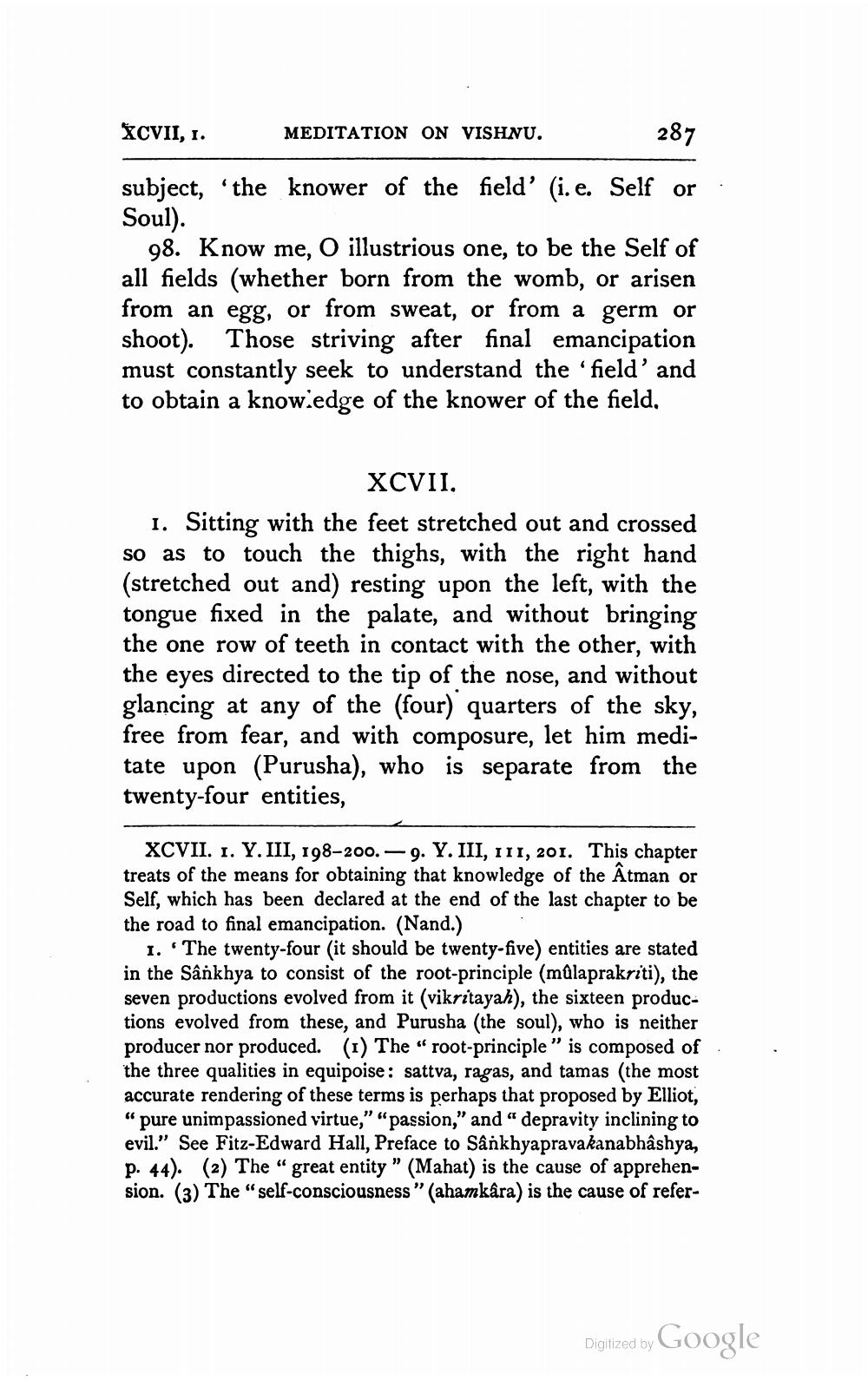________________
XCVII, 1. MEDITATION ON VISHNU. 287 subject, the knower of the field' (i.e. Self or Soul).
98. Know me, O illustrious one, to be the Self of all fields (whether born from the womb, or arisen from an egg, or from sweat, or from a germ or shoot). Those striving after final emancipation must constantly seek to understand the 'field' and to obtain a know.edge of the knower of the field.
XCVII. 1. Sitting with the feet stretched out and crossed so as to touch the thighs, with the right hand (stretched out and) resting upon the left, with the tongue fixed in the palate, and without bringing the one row of teeth in contact with the other, with the eyes directed to the tip of the nose, and without glancing at any of the (four) quarters of the sky, free from fear, and with composure, let him meditate upon (Purusha), who is separate from the twenty-four entities,
XCVII. 1. Y. III, 198-200. — 9. Y. III, 111, 201. This chapter treats of the means for obtaining that knowledge of the Atman or Self, which has been declared at the end of the last chapter to be the road to final emancipation. (Nand.)
1. The twenty-four (it should be twenty-five) entities are stated in the Sânkhya to consist of the root-principle (můlaprakriti), the seven productions evolved from it (vikritayah), the sixteen productions evolved from these, and Purusha (the soul), who is neither producer nor produced. (1) The “root-principle" is composed of the three qualities in equipoise: sattva, ragas, and tamas (the most accurate rendering of these terms is perhaps that proposed by Elliot, "pure unimpassioned virtue," "passion," and "depravity inclining to evil." See Fitz-Edward Hall, Preface to Sânkhyapravakanabhâshya, p. 44). (2) The “great entity" (Mahat) is the cause of apprehension. (3) The "self-consciousness" (ahamkâra) is the cause of refer
Digitized by Google




